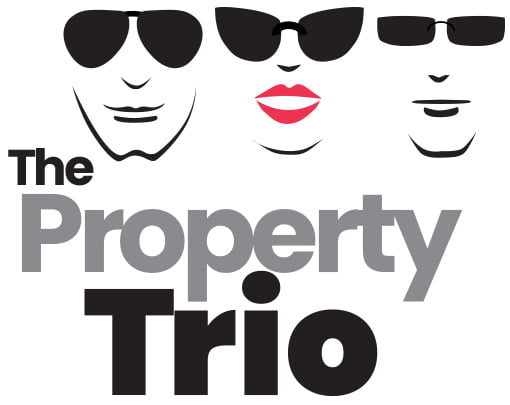Melbourne’s property market has faced a modest decline, with values dropping 1.0% over the last quarter and 2.3% over the last year.
When compared to the remarkable growth seen in Perth (21.0%), Adelaide (14.0%) and Brisbane (12.1%) over the past 12 months, Melbourne’s performance is underwhelming.
This is even more striking when looking at the growth in values since the onset of COVID-19 (March 2020):
Growth rates since March 2020
- Perth 76.8%
- Adelaide 71.4%
- Brisbane 67.6%
- Sydney 28.47%
- Melbourne 9.5%
However, several key indicators suggest Melbourne may be on the verge of a market rebound.
In today’s blog, we delve into the data points that signal the potential for recovery emerging in Melbourne’s property market:
- Melbourne Rental Yields Move Above Brisbane and Adelaide for the First Time in History
- Home Buyer Sentiment Soars in Melbourne, but Nosedives in Perth, Brisbane and Adelaide
- Melbourne’s Median Falls Below Brisbane and Canberra
- Income to Price Ratio Superior to Brisbane, Adelaide and Hobart
- Falling New Listings Drying Up Supply
- Melbourne Population Closing in on Sydney
- Will Interest Rates Falling be the Catalyst?
- When Will Melbourne Rebound?
- Is Now the Best Time Buy?
Melbourne Rental Yields Move Above Brisbane and Adelaide for the First Time in History
Gross Rental Yields – all dwellings:

Source: CoreLogic
For the first time in the history of the CoreLogic ‘Gross Rental Yield’ series, Melbourne’s rental yields surpassed Brisbane and Adelaide
Melbourne began 0.83 basis points below the average Brisbane yield and 0.76 basis points below Adelaide two years ago and has surpassed them both.
An extra 0.83% yield on a property valued at $1,000,000 equates to $8,300 per annum turnaround.
You now receive less rental income to cover your mortgage costs when buying in Brisbane and Adelaide, than in Melbourne on average.
The table shows that Melbourne’s rental yields have been steadily rising since 2022, whereas Brisbane and Adelaide yields have declined in the last 12 months and have now fallen below their October 2022 levels.
High yields are often a sign that prices are low due to the inverse relationship between prices and rental yields.
If the prices stay flat or fall (as they have in Melbourne), and rents stay at the same level or increase, the rental yield increases.
This is precisely what is occurring in Melbourne to cause the rental yields going up! ⬆️
In contrast, Brisbane and Adelaide prices have risen so fast that rental yields have been falling. ⬇️
This shift is an important price signal to investors.
This is one market signal that Melbourne is close to the bottom of the market cycle.
Investors considering a move into the Melbourne market will recognise this.
Home Buyer Sentiment Soars in Melbourne, but Nosedives in Perth, Brisbane and Adelaide

Another key indicator is homebuyer sentiment, which has jumped recently in Victoria.
In stark contrast to Perth, Brisbane and Adelaide where it has fallen significantly.
The Westpac Melbourne Institute Consumer Sentiment Survey “time to buy a dwelling” index nationally reached 86.8, its highest level in nearly three years.
What is particularly noticeable on a state basis is that Victoria has led the recovery with a huge 31.5% surge, reaching a positive index reading of 101.3.
This indicates buyers in Melbourne are increasingly confident in the market and believe now is a good time to purchase.
This contrasts with relatively poor sentiment in three of our strongest performing markets.
Home buyer sentiment has slumped to the 80-87 range in Queensland and South Australia.
In Western Australia it is even weaker at a reading of just 66.
There seems to be a general feeling that the property party is coming to an end in those three states.
This shift suggests that while some markets may start to cool off, buyers in Melbourne are starting to sense an opportunity.
Are we seeing the passing of the baton to Melbourne and possibly Hobart and Sydney in the capital city market cycles?
Melbourne’s Median Falls Below Brisbane and Canberra
Median Values ‘Slip Sliding Away’ For Melbourne….but Will this Last?

Source: CoreLogic
At the start of the pandemic in March 2020, Melbourne’s median dwelling value commanded a significant 37% premium over Brisbane’s. Since then, Brisbane’s property values have grown at more than six times the rate of Melbourne’s.
And in May this year, Brisbane’s median property values for houses and units surpassed those of Melbourne for the first time in over a decade.
Brisbane’s median house became more expensive than Melbourne’s for the first time since 2008.
Meanwhile, Perth and Adelaide are steadily closing the gap on Melbourne’s median values.
If Melbourne’s market recovery remains sluggish, there’s a genuine possibility that Perth and Adelaide could overtake Melbourne’s median in 2025.
For houses, Melbourne could drop from perennially being the second or third most expensive city in Australia, to the sixth.
This is unprecedented.
Even moreso when you consider that Melbourne will soon become the most populated city in the country.
Are Melbourne’s medians more likely to stay at the level they are at or revert to the historical norms and rise once more above Brisbane and Canberra, let alone Adelaide and Perth?
Income to Price Ratio Superior to Brisbane, Adelaide and Hobart

Median home values are just one piece of the housing affordability puzzle— another crucial factor is income.
Housing affordability improves when income growth outstrips the growth in home values.
Melbourne has seen higher-than-average income growth, bolstering accessibility to housing whilst property values have fallen.
Between March 2022 (the last market peak) and June 2024, dwelling values in Melbourne fell by -4.2%, while incomes rose by an impressive 8.8% over the same period. As a result, Melbourne’s dwelling value-to-income ratio dropped to 7.1 in June 2024, marking its lowest level in nearly four years.
In contrast, Brisbane and Adelaide have seen their dwelling value-to-income ratios climb to record highs, reaching 8.0 and 8.6, respectively.
Notably, this means that the price to income ratio for Melbournians is superior than those living in Brisbane and Adelaide.
These demographic shifts cause people to look to move to a new capital city for better priced properties and higher paying jobs, making Melbourne more attractive to those living interstate.
Falling New Listings Drying Up Supply

Source: CoreLogic
New listings fell by 5.3%, while older stock is being absorbed faster than usual in Melbourne.
Listing numbers often serve as a barometer for price direction and value growth.
Falling listings restrict supply.
This often produces increased prices when sustained over time.
This drop could signal that Melbournians are hesitating to sell, due to concerns about selling for a lower price that the vendor wants or expects.
This is another key metric to track for the Melbourne market to watch as we wind up 2024 and head into 2025.
Melbourne Population Closing in on Sydney
The Federal Government’s Centre for Population predicts Melbourne will lead the nation as the fastest-growing city over the next decade, thanks to overseas migration, resulting in an annual growth rate of 1.7% for Melbourne.
Here’s how other capital cities compare over the next 10 years:
- Melbourne 1.7%
- Darwin – 1.5%
- Perth 1.4%
- Brisbane 1.3%
- Sydney 1.2%
- Hobart – 1.2%
- Adelaide – 0.9%
Meanwhile, Sydney has been experiencing a net loss in interstate migration, with the latest annual figures for March 2024 from the ABS revealing that 31,183 more people left New South Wales than moved into the state. According to the Centre for Population, this trend is projected to persist over the next decade.
By 2032, projections indicate Melbourne’s population will surpass Sydney’s, positioning it as Australia’s largest city.
This surge in population is likely to exert upward pressure on housing prices, particularly if the pace of new housing supply lags behind growing demand.
Will Interest Rates Falling be the Catalyst?
For the last 12 months, the Reserve Bank of Australia (RBA) has been holding rates at their highest levels in over a decade.
Mortgage holders have been eagerly awaiting a fall in interest rates since the beginning of the year, but persistent inflation has delayed these expectations.
With several nations starting to cut rates to boost their economies, the pressure will build in Australia.
Smart money has the first-rate fall earmarked for May or July, there is no RBA meeting in June.
Lower interest rates will spur both homebuyers and investors to act—especially in a city like Melbourne, where the property market has been subdued for an extended period, especially in comparison to Perth, Adelaide and Brisbane.
The timing and scale of these anticipated interest rate cuts in 2025 could be the primary catalyst for a full-scale rebound.
When Will Melbourne Rebound?
With Melbourne rental yields surpassing Brisbane and Adelaide for the first time ever, consumer sentiment surging in Melbourne and falling significantly in Perth, Adelaide and Brisbane on the ‘time to buy a dwelling index’, the income to price ratio for Melbourne moving above Adelaide and Brisbane., and a drop in new listings, the price signals are stacking up.
The data is building up for Melbourne to be in a sweet spot from a price and yield perspective.
Right now may well prove to be the best buying time to re-enter the Melbourne market when we look back a few years from now.
Want to Learn More?
Listen to #284 – Market Update Oct 24 – Sentiment Waxes & Wanes but for Which States? Melbourne Yields Make History! Mid-size Capitals Slow & Hobart Rises Again?
Reach Out to Us for Expert Advice
Schedule a meeting with us to discuss your:
- Mortgage Strategy
- Next Purchase
- Refinance
- Develop a Comprehensive Property Plan




